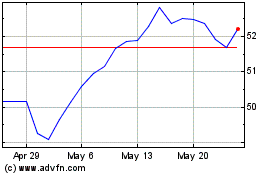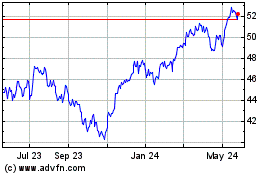The Euro zone has seen weak GDP growth for yet another quarter,
dropping 0.2% in Q1. Though this marks an improvement from the
previous quarter’s decline of -0.6%, it is yet another major blow
for the single currency bloc struggling to rebound from a debt
crisis.
The region is facing increased hurdles from the need to
restructure domestic markets and the impact of sluggish world trade
growth, in particular from weak demand from emerging markets.
Increasing unemployment, tumbling inflation and fiscal
tightening are already impacting domestic consumption in the
region. Moreover, a rising Euro has made European exports
expensive, hurting their competitiveness (read: Has the Euro ETF
Bottomed Out?).
Unemployment across the Euro zone has reached a record high of
12.1%, well above the whole of European Union rate of 10.9%. In
fact, Greece and Spain have a higher unemployment rate of 27.2% and
26.7%, respectively, followed by Portugal at 17.7% and Italy at
11.5%.
The Long Recession
While the recession is not as deep as what we saw in the
aftermath of the financial crisis of 2008–09, it is the longest
recession in the 14-year history of the Euro, with the region being
in recession since Q4 of 2011.
While the crisis was initially contained to two of the
troubled PIIGS - Greece and Portugal-- the malaise is now
spreading to the other core economies with France being the latest
addition to the list (read: Time to Sell the France ETF?).
According to the data from the European Union, nine of the 17
Euro zone countries are now in recession. France, Europe's
second largest economy, has experienced a recession for the second
time in four years, while Germany recorded weak growth of 0.1% in
the first quarter.
Greece is in its sixth year of recession with the economy
shrinking by 5.3%, while the Spanish and Italian economies
contracted by 0.5% each. Meanwhile, the economies of Finland,
Cyprus, the Netherlands and Portugal also shrank in the same
time-frame, suggesting broad based weakness across the bloc.
Will ECB Succeed In Escaping Recession?
In order to avoid falling into a deeper recession, the European
Central Bank (ECB) cut its benchmark interest rate this month by a
quarter percentage point to a record low of 0.50% (read: ECB Rate
Cut: How Did It Impact Euro ETFs?).
Further, the ECB has promised to provide ample liquidity to the
Euro zone banks until next July in an effort to support the
recession hit economy. It also seeks to support smaller companies
which were affected by poor liquidity conditions.
However, the ECB expects that the economy would not show any
improvement until the second half of the year. But with such poor
economic data, recovery even in the second half of the year could
be elusive.
Euro zone ETFs to Avoid
In such a backdrop, we recommend investors keep away from euro
zone ETFs at least for the short term. Though these funds have
generated decent returns so far in the year, there is no guarantee
of a further surge given the bearish fundamentals for these
economies.
Below, we take a closer look at some of the ETFs that have the
largest exposure to the Euro zone economies and thus could be
European ETFs to avoid this summer (see more ETFs in the Zacks ETF
Center).
SPDR EURO STOXX 50 ETF (FEZ)
This fund seeks to match the price and yield of the EURO STOXX
50 Index, before fees and expenses. The index measures the
performance of some of the largest companies across the components
of the 20 EURO STOXX Supersector Indexes.
Holding 55 securities in its basket, the product puts less than
40% of its assets in top 10 holdings. The ETF is skewed towards
financials, as it takes roughly one-fourth of the total assets,
while healthcare, consumer staples and industrials round to the
next three spots.
In terms of country allocations, France and Germany are at the
top position with 37.51% and 31.90% share, respectively, followed
by Spain (11.71%), Italy (7.77%), the Netherlands (7.01%), Belgium
(3.35%) and Ireland (0.71%) (read: More Trouble Ahead for Italy and
Spain ETFs?).
Launched in October 2002, this is one of the largest and most
popular ETFs in the European space. The fund appears rich with AUM
of over $2.2 billion, and average daily volume of roughly 810,000
shares. The ETF charges 29 bps in fees per year from investors.
The fund returned about 4.21% so far in the year. FEZ currently
has a Zacks ETF Rank of #3 or ‘Hold’.
iShares MSCI EMU Index Fund (EZU)
Like FEZ, this fund is also one of the more popular ones in the
space with AUM of $2.2 billion while charging investors 0.50% in
annual fees. The ETF tracks the MSCI EMU index, which measures the
performance of the equity markets of the EMU member countries
(those European Union members that use the Euro as its
currency).
The fund holds about 250 securities in its basket
which is pretty spread across each security, as no single firm
holds more than 4% of the assets. From a sector look, the product
has a diverse approach with financials, industrials, consumer
discretionary and consumer staples taking a double-digit allocation
(read: Make the Ultimate Consumer Bet with the Gaming ETF).
Country weights for the top three are France (31.63%), Germany
(30.06%) and Spain (10.04%). EZU is a large cap centric fund and is
extremely liquid, trading in volumes of 2 million shares per
day.
The fund is up 5.44% this year and currently has a Zacks ETF
Rank of #3 or ‘Hold’
WisdomTree Euro Debt Fund (EU)
Launched in May 2008, this ETF provides broad exposure to debt
securities of issuers in the Euro zone. It seeks a high level of
returns in the form of both income and capital appreciation.
Holding 34 securities, about 50% of the product’s holdings
mature in less than 10 years, giving EU an effective duration of
5.25 years and average maturity of 5.30 years. In terms of credit
quality, the fund focuses on top rated ‘AAA’ bonds.
Again here, Germany and France occupy the top two positions in
terms of country exposure, closely followed by Luxumberg and the
Netherlands.
The product has so far attracted assets worth just $4.5 million,
charging investors a fee of 35 bps a year. It yields 1.57% in
annual dividends, 0.46% in 30-day SEC yield and 0.86% in yield to
maturity. The ETF has lost 3.85% year-to-date.
Want the latest recommendations from Zacks Investment Research?
Today, you can download 7 Best Stocks for the Next 30
Days. Click to get this free report >>
WISDMTR-EURO FD (EU): ETF Research Reports
ISHARS-EMU IDX (EZU): ETF Research Reports
SPDR-EU STX 50 (FEZ): ETF Research Reports
CRYSHS-EURO TR (FXE): ETF Research Reports
To read this article on Zacks.com click here.
Zacks Investment Research
Want the latest recommendations from Zacks Investment Research?
Today, you can download 7 Best Stocks for the Next 30 Days. Click
to get this free report
iShares MSCI Eurozone ETF (AMEX:EZU)
Historical Stock Chart
From May 2024 to Jun 2024

iShares MSCI Eurozone ETF (AMEX:EZU)
Historical Stock Chart
From Jun 2023 to Jun 2024
